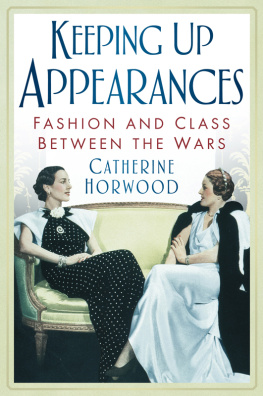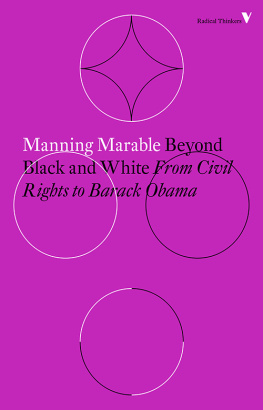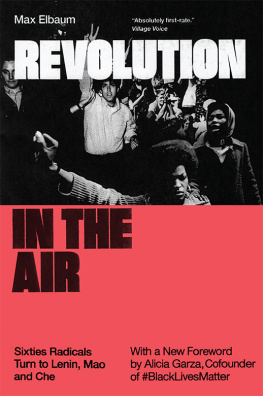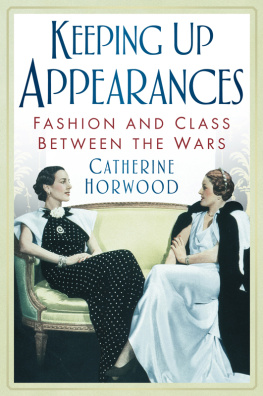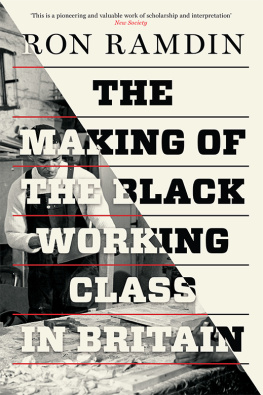Keeping Up
Appearances
A vivid, witty, original and above all highly enjoyable recreation of dress, manners and social codes between the wars. Horwood uncovers the world of the discreet dress agencies, which promised nearly new gowns by post with courtesy, privacy and exclusiveness guaranteed; the secretaries whose georgette blouses revealed far too much cami; the female professor of history at the L.S.E. who flew to Paris to buy a dress every time she published an article; and the unfortunate policeman who was shunned on a boating trip for wearing the wrong togs.
The study is much broader than conventional fashion history, using clothes to cast a search light on middle-class culture. Keeping Up Appearances marshalls copious evidence on the link between dress, class and decorum. A spruce yet suitable appearance was all important. As Fashions for All , 1925 warned many a marriage will not take place notice has been traced back to a dusty black velvet frock. Horwood stresses the importance of correctness and propriety over voguishness for the well-upholstered, mature middle classes. As Ethyl Campbell, a London buyer said in 1939 A woman should have a fresh wholesome appearance, turned out in such a way that it subtly conveyed, without investigation, that her underclothing was spotless. A goldmine.
Professor Amanda Vickery, Queen Mary, University of London, author of The Gentlemans Daughter (Yale University Press, 1998) and Behind Closed
Doors: At Home in Georgian England (Yale University Press, 2009).
The Twenties and Thirties were a glamourous time in Britain for some. But they were also decades tinged with anxiety since dress codes were so nuanced and unforgiving. Catherine Horwood brings these interwar years of fashion and just getting dressed brilliantly alive with insight, subtlety and wit.
Juliet Gardiner, author of The Thirties: An Intimate History and The Blitz:
The British Under Attack.
Keeping Up
Appearances
F ASHION AND C LASS
B ETWEEN THE W ARS
C ATHERINE H ORWOOD

First published in 2005
This edition published in 2011
The History Press
The Mill, Brimscombe Port
Stroud, Gloucestershire, GL5 2QG
www.thehistorypress.co.uk
This ebook edition first published in 2013
All rights reserved
Catherine Horwood, 2005, 2007, 2011, 2013
The right of Catherine Horwood to be identified as the Author of this work has been asserted in accordance with the Copyrights, Designs and Patents Act 1988.
This ebook is copyright material and must not be copied, reproduced, transferred, distributed, leased, licensed or publicly performed or used in any way except as specifically permitted in writing by the publishers, as allowed under the terms and conditions under which it was purchased or as strictly permitted by applicable copyright law. Any unauthorised distribution or use of this text may be a direct infringement of the authors and publishers rights, and those responsible may be liable in law accordingly.
EPUB ISBN 978 0 7524 9557 6
Original typesetting by The History Press
Contents
Acknowledgements
This book is about people and their choices and tastes in dress. Photographs alone cannot tell you why someone has chosen to wear a certain outfit or why they disapproved of it on someone else. Nevertheless, they are a vital tool in piecing together reality as opposed to fantasy. So I would like to start by thanking the Baxendale, Hendrick, Styles and Sharp families among others for scouring their family photograph albums and allowing me to reproduce their family memories, as well as friends, family and the oral history interviewees who also gave me access to their albums.
I would like particularly to thank those anonymous men and women who talked to me as part of my oral history research. Over endless cups of tea, we pored over old magazines and picture books together to retrieve memories that had not been thought about in many cases for over sixty years. Their testimony, together with the hundreds of records left by the respondents of the Mass-Observation Archive, added enormously to the richness of this work. I am so grateful for the unfailing helpfulness of Joy Eldridge and the team at the Mass-Observation Archive at the University of Sussex led by Dorothy Sheridan. I am also indebted to Monty Moss of Moss Bros, staff at T.M. Lewin of Jermyn Street, and Robert Fearn, Secretary of the Stourbridge Rotary Club for the information they shared with me.
The staff of the British Library, the British Newspaper Library at Colindale, the London Library, the Punch Library, the National Portrait Gallery, and the Bedford Centre for the History of Women at Royal Holloway College, have all been unstintingly helpful. I would also like to thank the staff at the John Lewis Partnership Archive; the Documentary Photography Archive at the Greater Manchester County Record Office; the Hat Works Stockport Museum of Hatting; Luton Museum Services; the Museum of Costume, Bath; Simpsons Archive; the History of Advertising Trust in Norfolk; and the Oxfordshire County Record Office. My thanks go to Honor Godfrey at the Wimbledon Lawn Tennis Museum for her continuing support. I am, of course, greatly indebted to the Arts and Humanities Research Board for their generous funding of the research that has culminated in this book.
Over the years I have received hugely helpful feedback and support from a large number of friends and colleagues, in particular Barbara Burman, Carol Dyhouse, Edwina Ehrman, Martin Francis, Hannah Greig, Clare Langhamer, Clare Lomas, Sharon Messenger, Niki Pullin, John Styles, Pat Thane, John Tosh, Judy Tregidden, Alex Windscheffel, and everyone else who listened to and read my work over the years. An enormous thank you goes to Amanda Vickery, my outstanding Ph.D. supervisor, whose energy and enthusiasm have been an inspiration.
As the mother of three fashion-conscious daughters, I have no shortage of advice on how to keep up appearances these days but I owe a deep debt of gratitude to my late mother who passed on to me her love of dress and dressmaking. As a young woman in the 1930s she always managed to be stylish at a time when quality did not come cheap, a talent that remained with her throughout her life. Finally, though he is often bemused by my fascination with schmutter , my love and thanks go to Paddy for listening, commenting and just being there.
Extracts from the Mass-Observation Archive are reproduced by permission of Curtis Brown Group Ltd, London, on behalf of the Trustees of the Mass-Observation Archive. Copyright Trustees of the Mass-Observation Archive.
Every effort has been made by the author to contact copyright holders of images reproduced in this book. If any copyright holders have not been properly credited, please contact the publishers, who will happily rectify the omission in future editions. The authors website address is www.catherinehorwood.com
Preface to the 2011 edition
In the six years since Keeping Up Appearances was first published, the boom times of the early twenty-first century have slipped away into recession. Imports of cheap clothes have meant that in terms of price, we have never had it so good. To a generation of young people the thought of buying quality rather than quantity is an alien concept.
Does this mean that we are further than ever from the days when clothes mattered? Far from it: a look around any public place shows that as much as ever, clothes are still a uniform sending out messages about the wearers background and beliefs. Ubiquitous jeans and trainers may have replaced flannel trousers, even plus fours, but the signals are remain similar. They are still saying, Look at me, I belong to this group or tribe. The trick is being able to read those signs.
Next page
